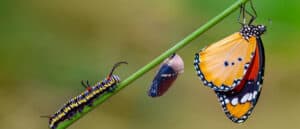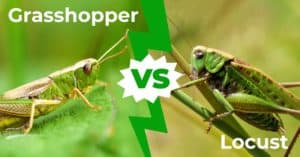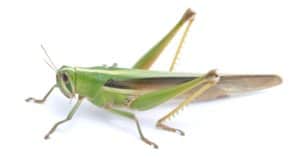Have you ever heard the story of the grasshopper and the ant? In the story, the grasshopper chooses to play all day while the ant works hard to store food for the winter. When winter arrives, the grasshopper is cold and hungry, while the ant is warm and well-fed. The story is an allegory that extols the virtues of hard work. That said, in real life, no grasshopper is just going to sit back and starve. A member of the suborder Caelifera, grasshoppers are common insects found on every continent except Antarctica.
There exist more than 10,000 different grasshopper species, making them a very diverse group of insects. Grasshoppers serve an important ecological function, as they serve as prey for numerous other animals. However, the tale of the grasshopper and the ant begs the question, what do grasshoppers eat?
To answer this question, we’ll take the time to explore what grasshoppers like to eat. In addition, we’ll examine how they forage for food and what senses they use. We’ll then discuss what adult grasshoppers eat in the wild and captivity, as well as what baby grasshoppers eat. That way, the next time you hear a grasshopper’s sweet song on a summer night, you’ll know that it’s not just whiling away the hours, but is also well-fed. So, get ready to explore the diet of this delightful insect, as we answer the question “what do grasshoppers eat.”
What Do Grasshoppers Like to Eat?
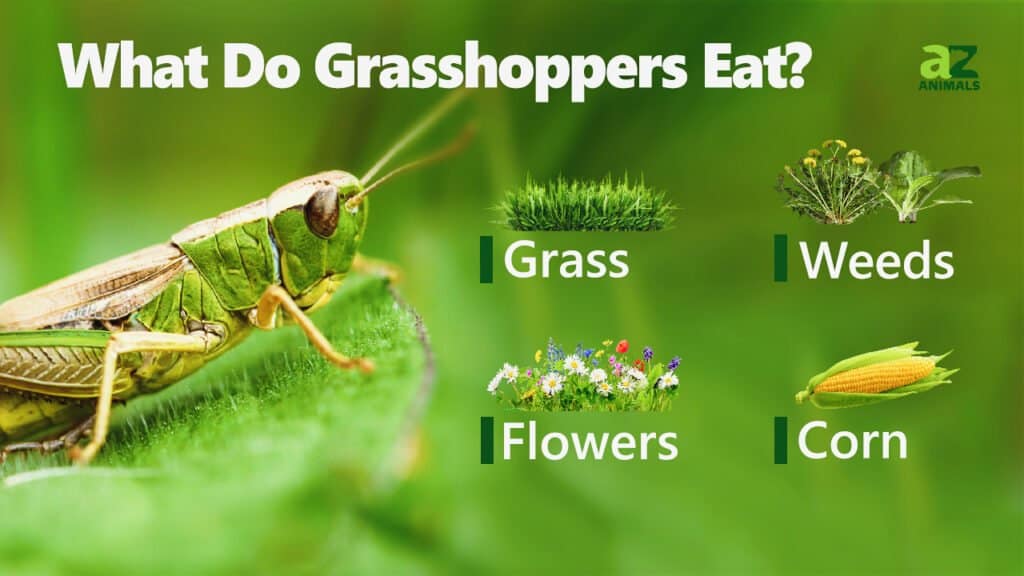
The majority of grasshoppers are herbivorous and will eat many different types of plants. Given that grasshoppers live in a wide variety of habitats, this means that different grasshoppers eat different plants. Generally speaking, grasshoppers will eat plants that are both abundant and locally available.
That said, while they aren’t picky, grasshoppers do tend to prefer some plants over others. However, this may be due to the nutritional content of the plants and their availability, rather than their taste.
Furthermore, some grasshoppers will also eat toxic plants. The reason behind this adaptation is to store the toxins in their bodies to discourage predators from eating them. In addition, some grasshoppers are omnivorous, and will also eat animal matter. With so many available foods and strategies, the list of common foods a grasshopper eats is quite extensive.
Grasshoppers eat the following foods:
- Oats
- Wheat
- Dead insects
- Corn
- Alfalfa
- Barley
- Rye
- Cotton
- Clover
- Grasses
- Flowers
- Leaves
- Seeds
- Carrion
- Moss
- Fungi
Overall, grasshoppers will eat predominantly plant matter. However, if plants are not readily available, they will also eat carrion or animal feces in order to get additional protein. Less commonly eaten foods include fungi, moss, and bark, which grasshoppers avoid when other plants are plentiful.
Grains, flowers, and grasses are their preferred foods, and they will eat them with relish given the opportunity.
How Do Grasshoppers Hunt For Food?
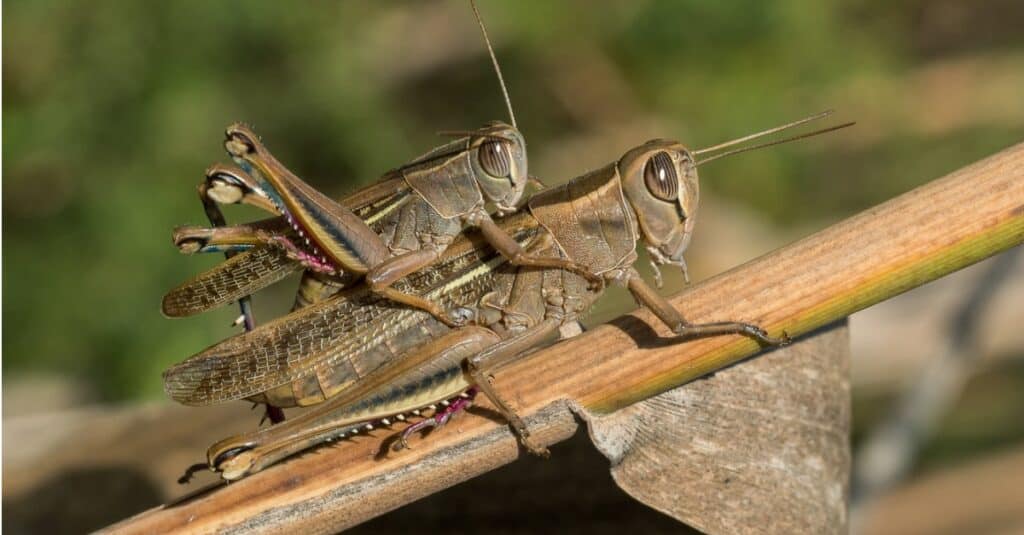
The first grasshoppers emerged around 250 million years ago.
©iStock.com/Brufal
The first grasshoppers evolved around 250 million years ago, making them one of the oldest herbivorous insects. Compared to most insects, the sensory system of a grasshopper is quite average. They possess large compound eyes on the sides of their head, which allow them to detect movement, shapes, distance, and color. In addition, they possess smaller eyes in the front of their head that detect light changes. Their antennae help them to smell and also serve as touch receptors that they use to investigate food and their environment.
Grasshoppers also have external organs on their abdomen which allow them to hear. Inside its mouth, a grasshopper has receptors that allow it to taste food. Finally, their entire bodies are covered in fine hairs known as setae. These hairs act as additional touch receptors and can detect the movement of the wind around them.
For the most part, grasshoppers are solitary insects that come together only to reproduce. On the other hand, locusts, which are a type of short-horned grasshopper, may exhibit swarming behavior. In a swarm, locusts respond to dense overcrowding by eating and breeding more. Swarms usually build up over time as nymphs are attracted to each other’s pheromones.
Once fully formed, swarms can descend upon and wipe out local vegetation, making them extremely destructive. Swarms can include billions of grasshoppers, and – in some rare cases – hundreds of billions or even trillions, according to estimates. That said, most grasshoppers will spend the majority of their lives foraging on their own.
What Do Grasshoppers Eat in the Wild?
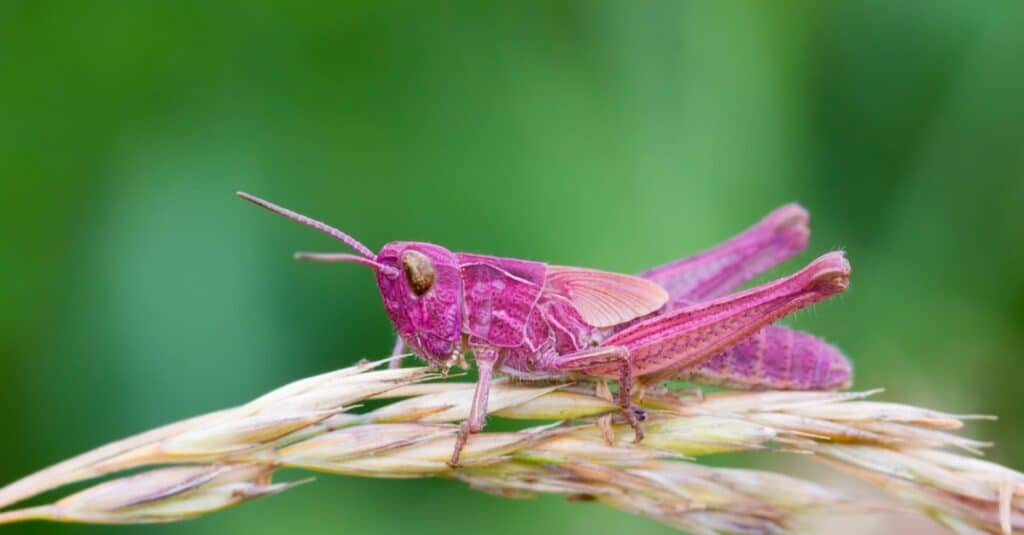
Grasshoppers eat a wide variety of both domestic crops and native grasses.
©iStock.com/chris2766
Wild grasshoppers will eat pretty much anything that they can find to sustain themselves. They aren’t picky eaters, and will willingly devour a wide variety of both wild and domestic crops. Due to their voracious appetites, farmers and gardeners often consider them pests. Some of a grasshopper’s favorite foods include domestic crops like barley, wheat, rye, corn, alfalfa, and cotton. That said, they will greatly enjoy native grasses, weeds, and leaves with relish.
Overall, grasshoppers are well adapted to eat just about any type of plant they encounter, including toxic ones. Their bodies digest carbohydrates in the crop, and proteins in the midgut. When plants are not readily available, grasshoppers will eat bark, fungi, or moss. As a means of last resort, they will also eat animal feces or even carrion to stave off hunger.
What Do Captive Grasshoppers Eat?
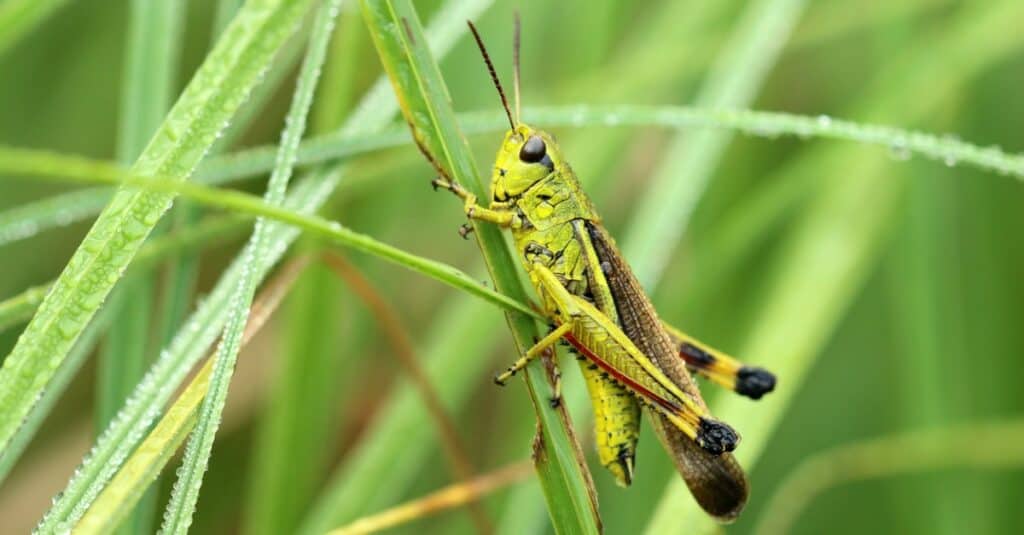
Grasshoppers have two jaws that allow them to grind their food.
©iStock.com/Eileen Kumpf
Thanks to their appearance, songs, and size, grasshoppers are common insects kept as pets. People will often raise them in terrariums, either as solo pets or as feed for other animals like frogs or lizards. If you decide to keep a captive grasshopper as a pet, you will need to know what to feed it. Luckily, grasshoppers will eat just about any type of grass that you can find.
You’ll want to provide a pet grasshopper with a variety of plants. By mixing up its food sources, you’ll simulate the food choices that a grasshopper naturally has available to it in the wild. Don’t worry about what types of grasses you provide your pet grasshopper, as it will eat just about anything. It’s more important to focus on quantity and diversity than quality. After all, a grasshopper can eat up to 16 times its own body weight in a day.
What Do Baby Grasshoppers Eat?
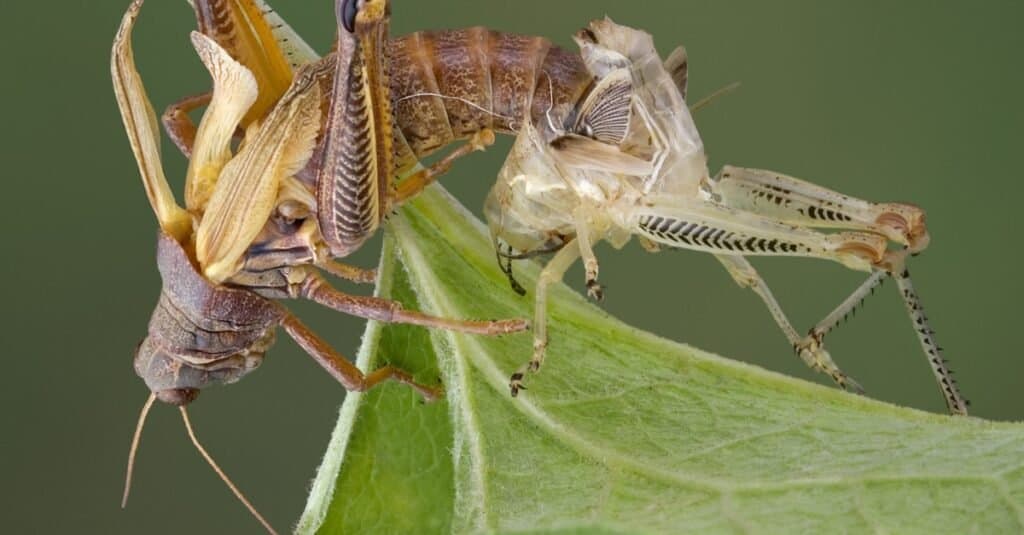
During the nymph phase of a grasshopper’s life, it molts five to six times.
©iStock.com/CathyKeifer
Baby grasshoppers are called nymphs. Most species go through several nymphal stages, during which time they will repeatedly molt until they reach the adult stage. What do grasshoppers eat before they morph into adults?
As nymphs, grasshoppers eat many of the same things as they do as adults, although their mandibles are not as strong or as large as adult grasshoppers. Due to this, nymphs usually prefer to eat softer, more easily digestible foods. They will typically eat shoots, clovers, and soft grasses, which are much easier to break apart. On the other hand, they’ll forgo harder foods such as bark or seeds. If you’re raising nymphal grasshoppers, you’ll want to make sure to feed them plenty of soft grasses. By doing this, you’ll ensure that the nymphs thrive on the diet you’re feeding them.
What do Grasshoppers Drink?
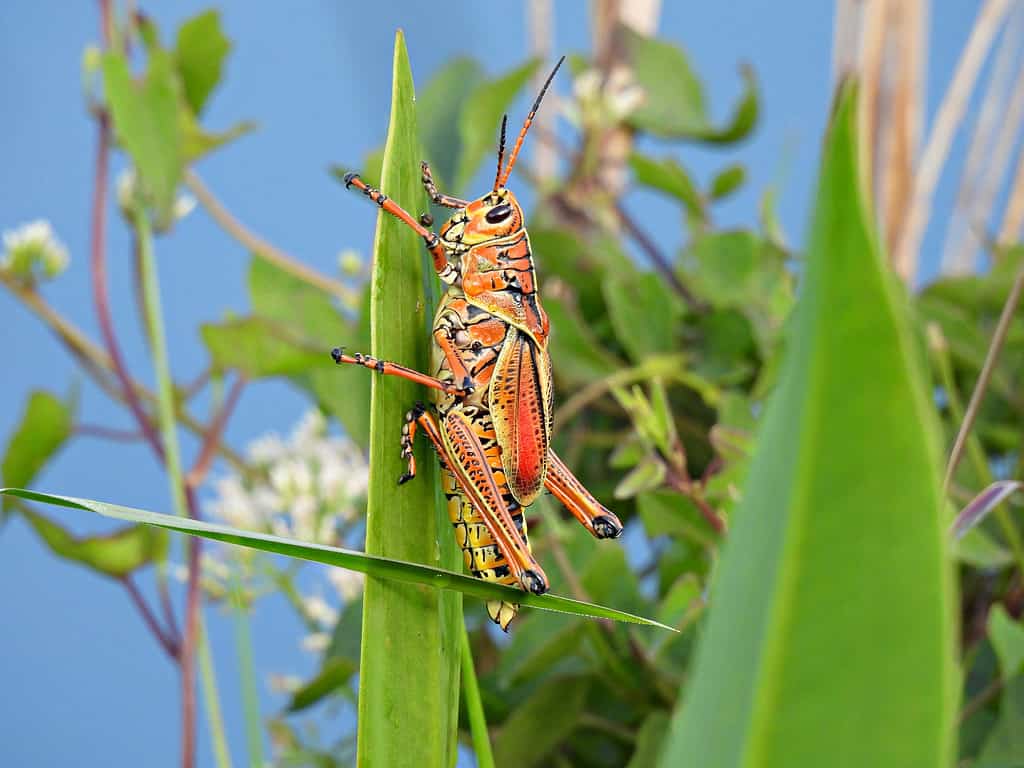
Grasshoppers need water, or moisture, to survive and typically are able to obtain this from their food
©iStock.com/passion4nature
Grasshoppers drink water, which they can obtain from a variety of sources in the environment, some of which are dew, and moisture on plants. A wild grasshopper, in its natural habitat, does not need to be given water as they are able to acquire it on their own from their surroundings. If you have a pet grasshopper, there are a few ways to give them water to ensure they have enough to drink.
Grasshoppers need water, or moisture, to survive and typically are able to obtain this from their food sources but to ensure they are receiving the proper levels of moisture, you can begin by making sure the humidity levels in their tanks are low and do not spray with water. However, any food you give them should be sprayed lightly with water.
The photo featured at the top of this post is © iStock.com/nrpphoto
Thank you for reading! Have some feedback for us? Contact the AZ Animals editorial team.




